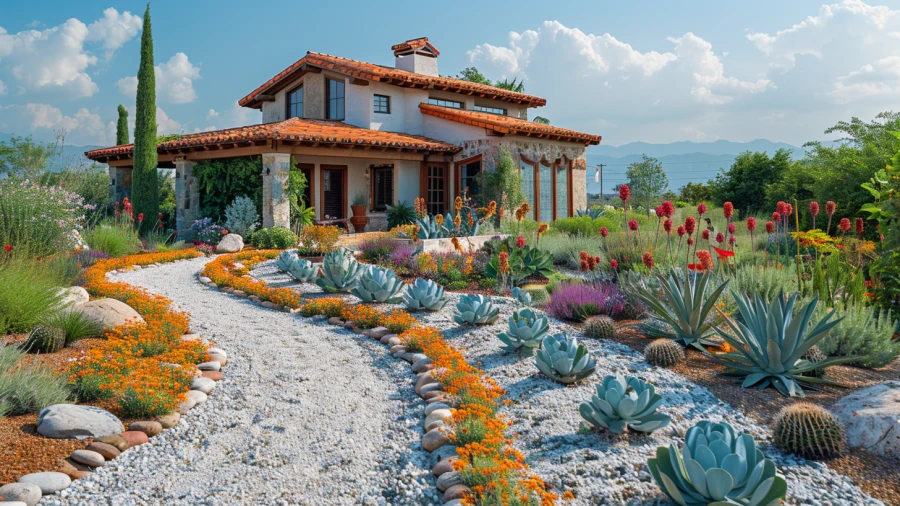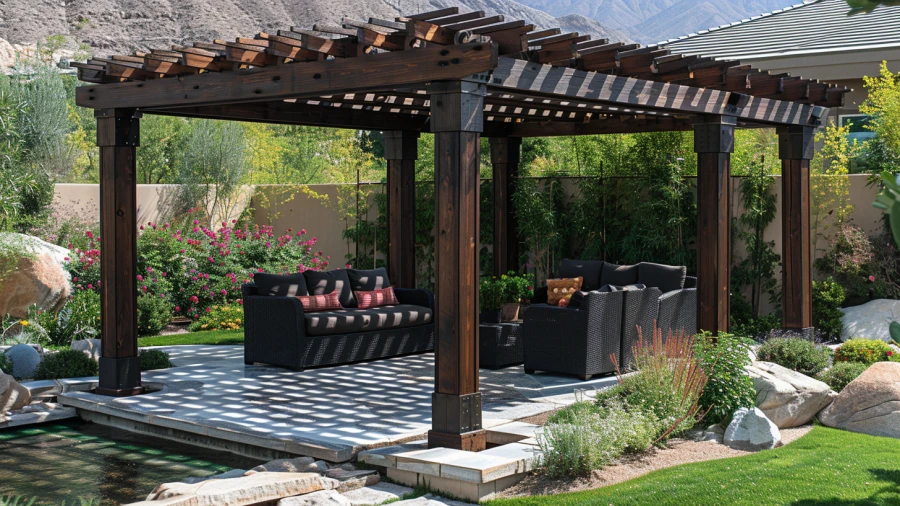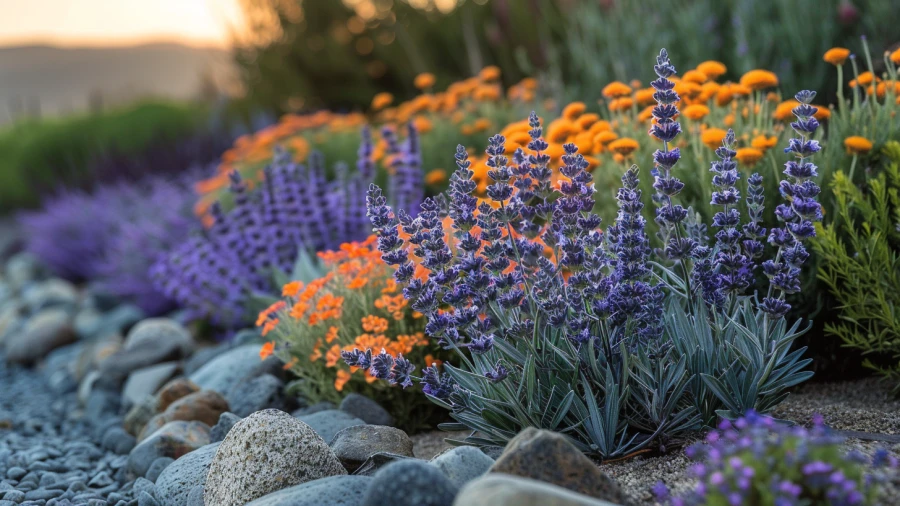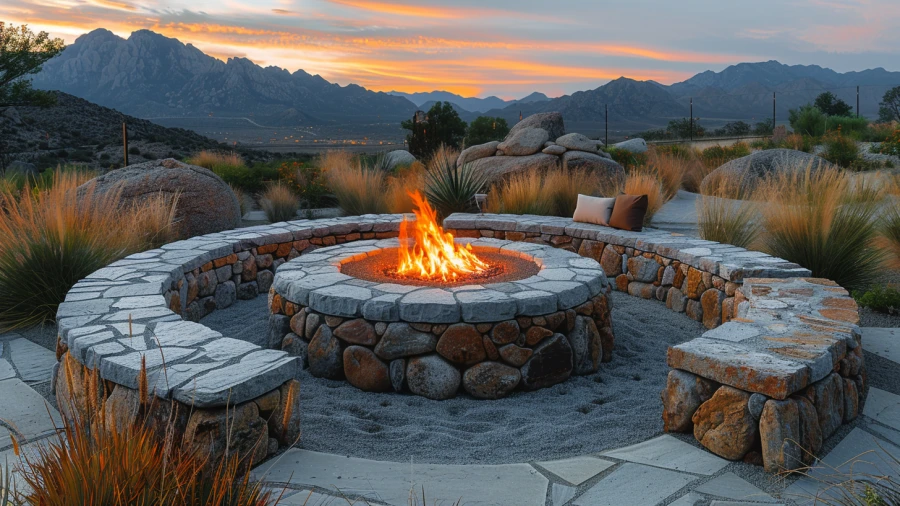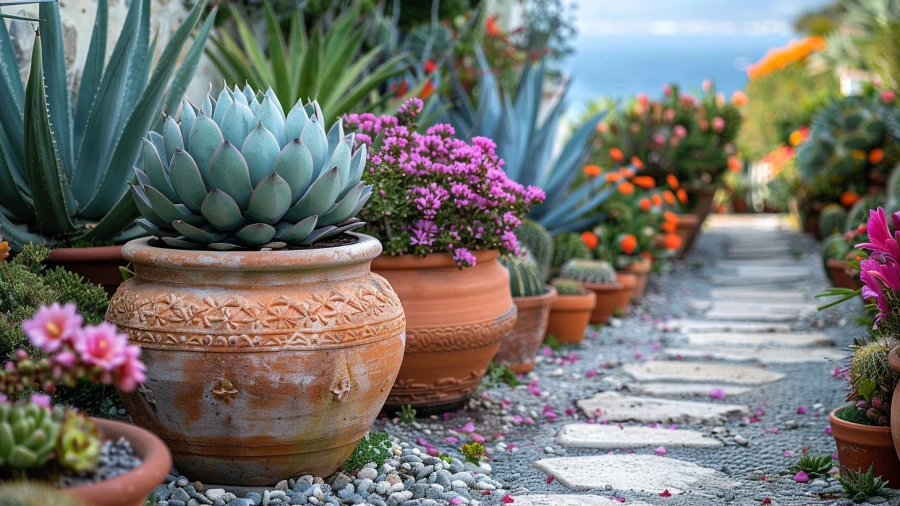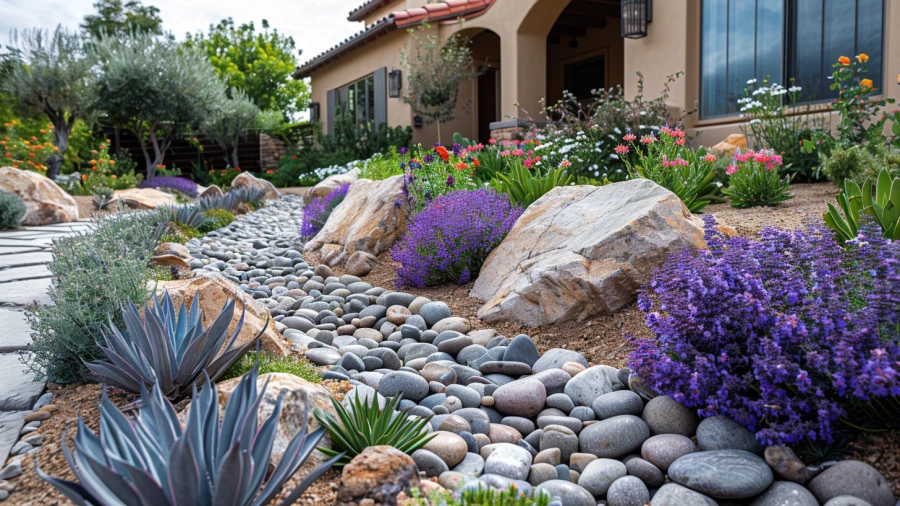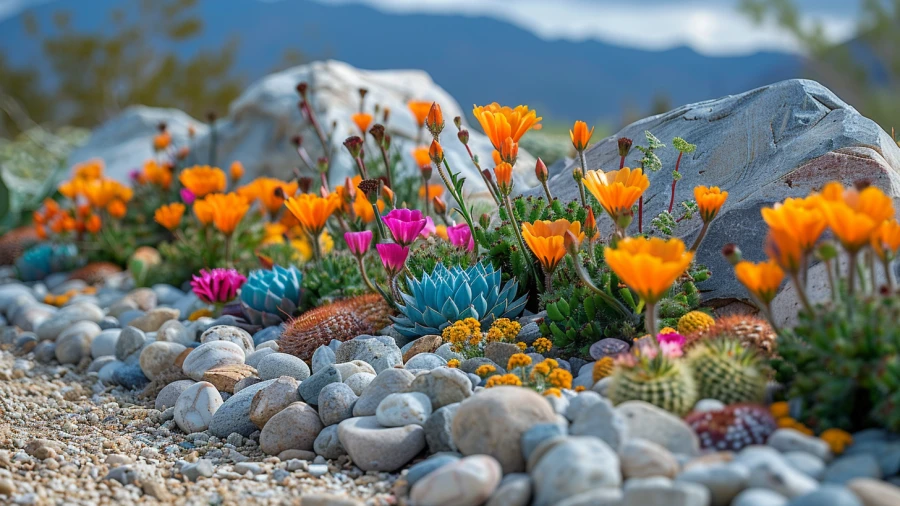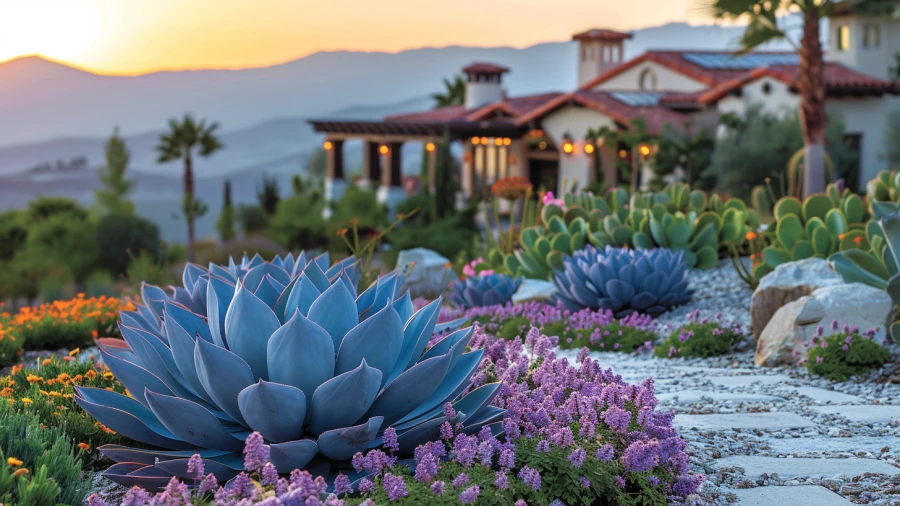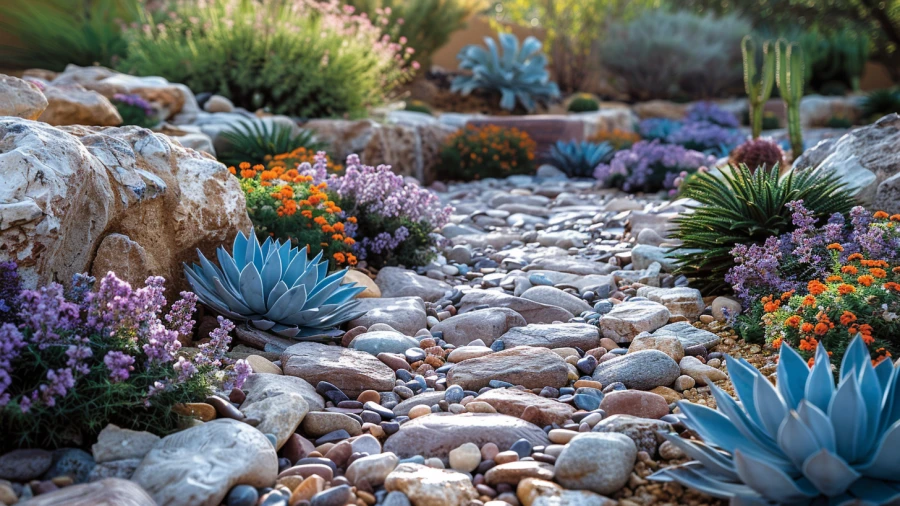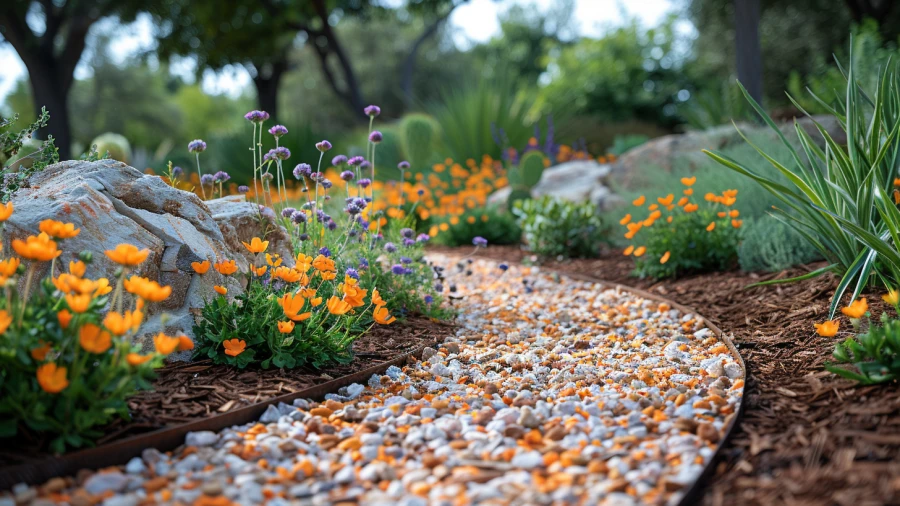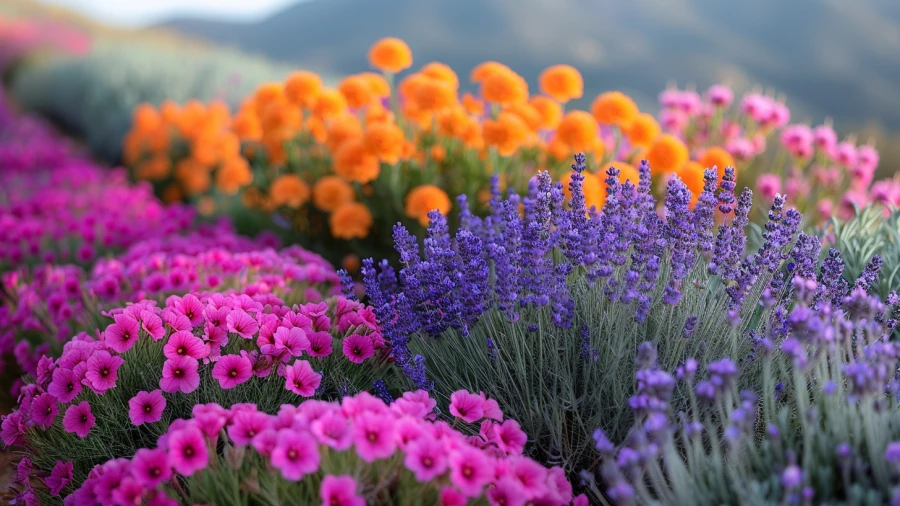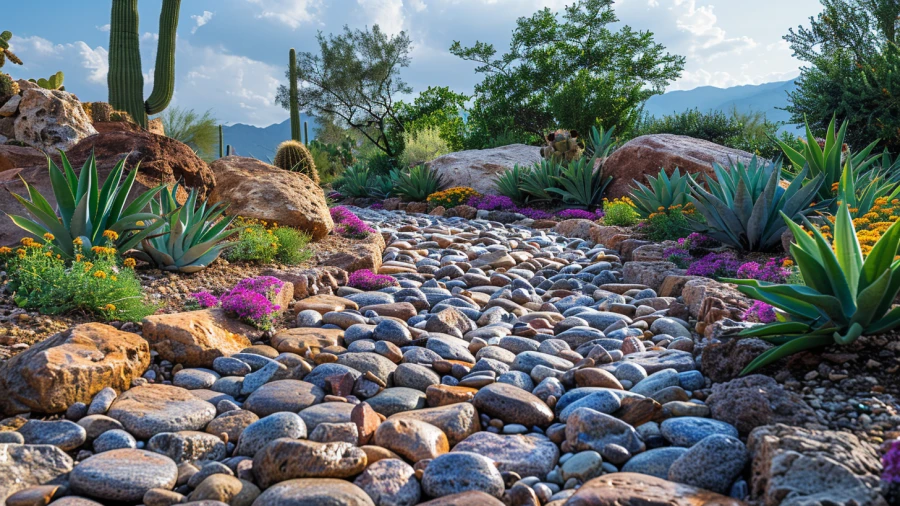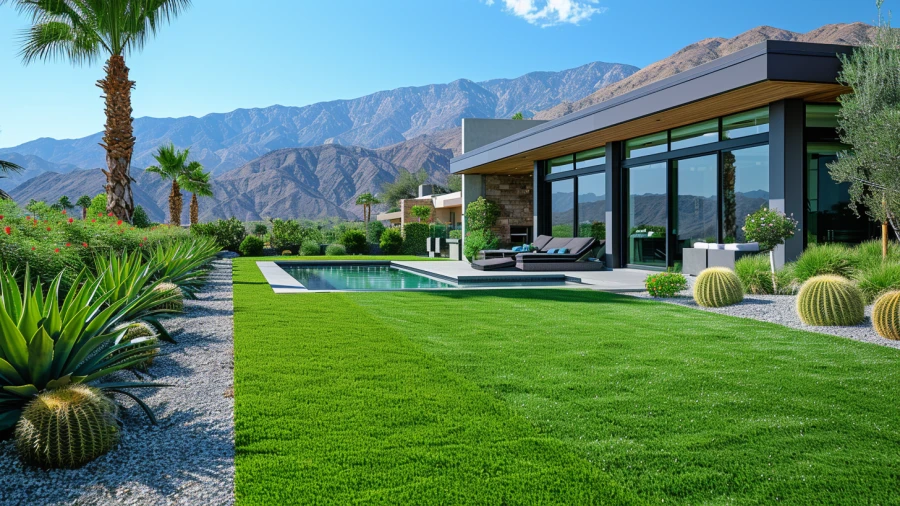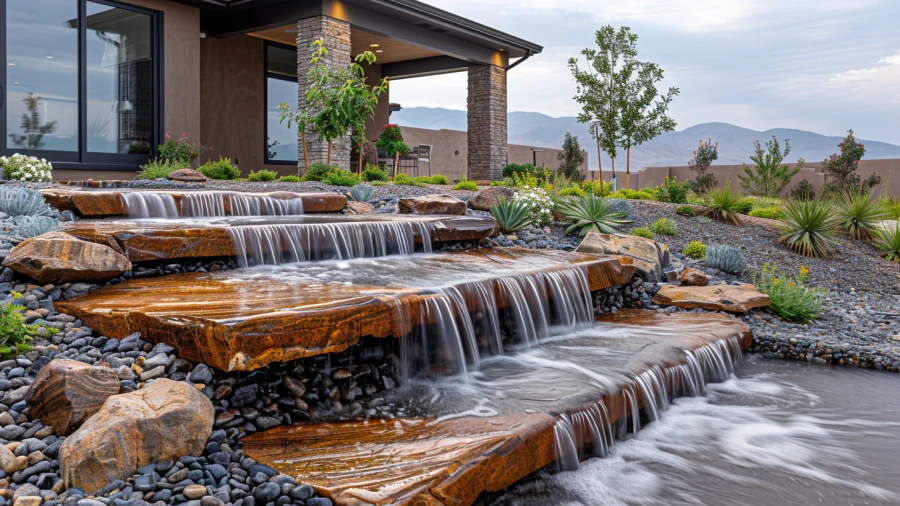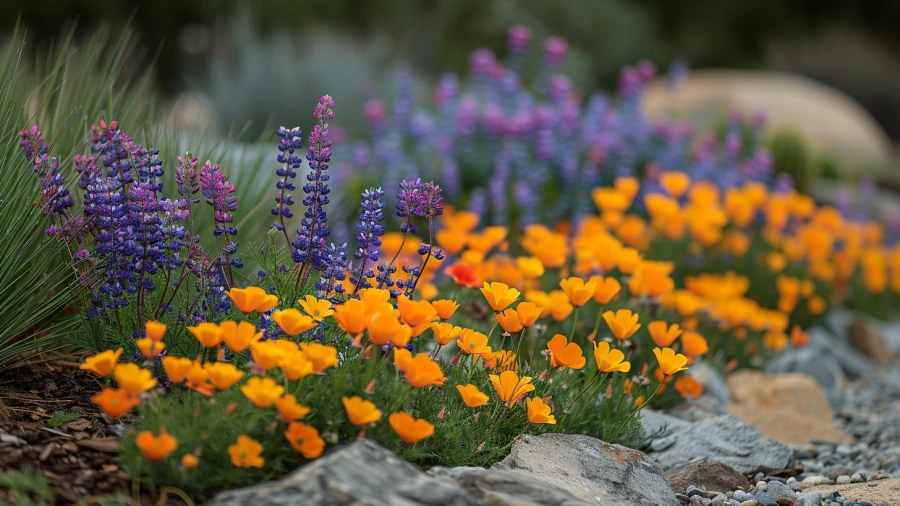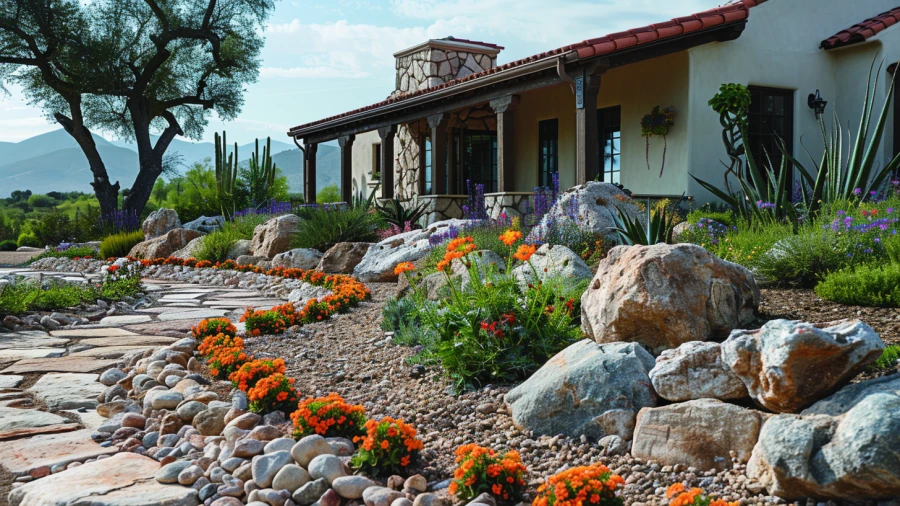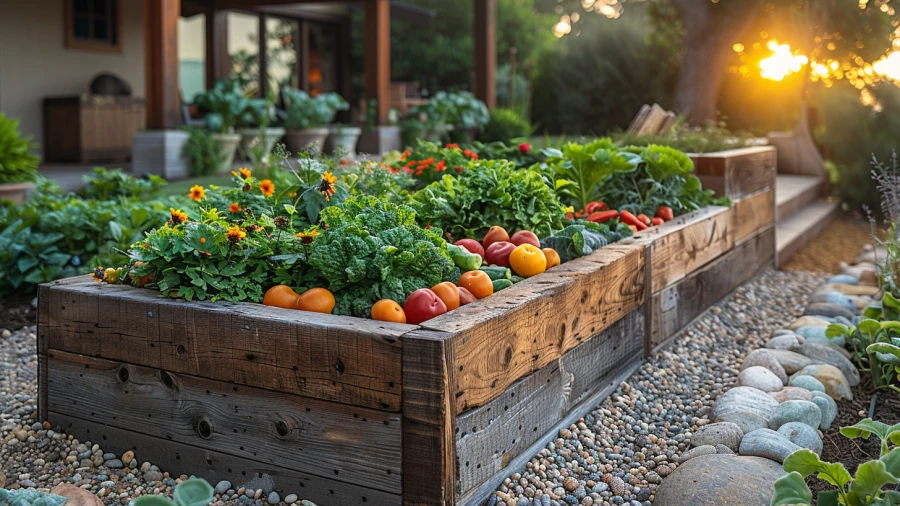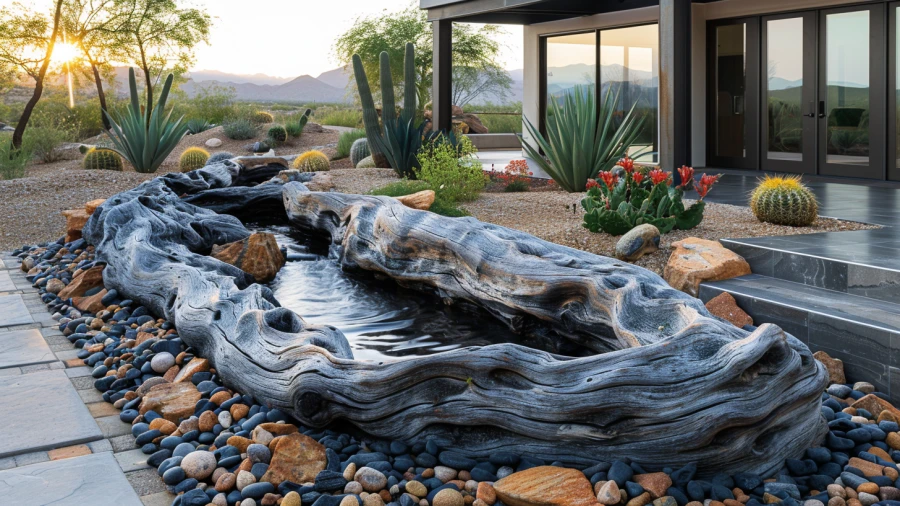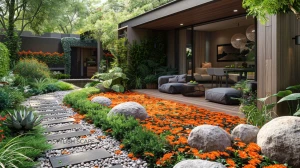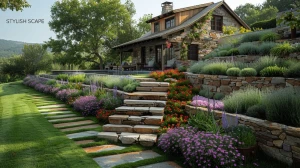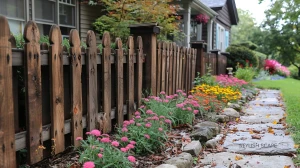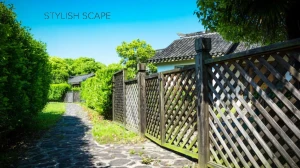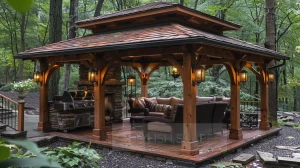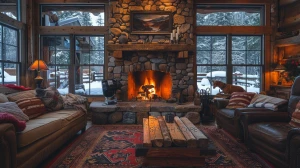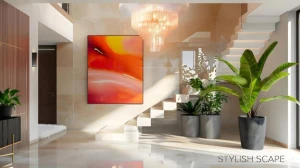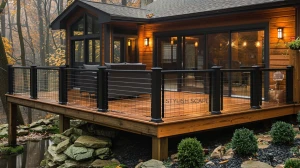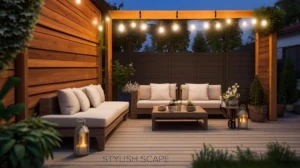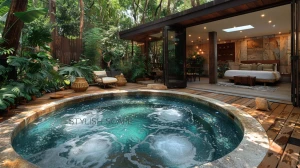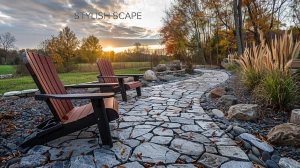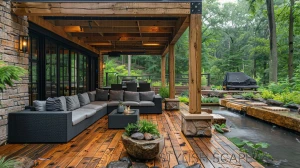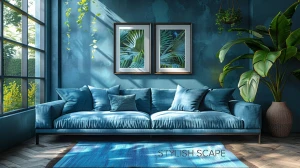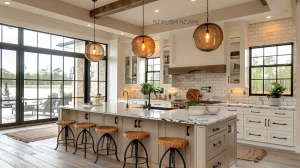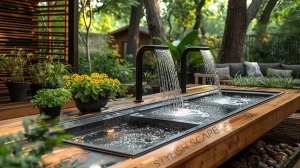
Desert Landscape Ideas to Transform Your Outdoor Space
Discover innovative ideas for transforming your space with Desert Landscape designs. From drought-tolerant plants to stylish stone features, these Desert Landscape solutions offer practical beauty for any arid environment. Explore and create your desert oasis today.
by Priyanka P
Updated Aug 22, 2024
On This Page
- Desert Dreams with Creative Landscape
- Desert-Inspired Color Schemes for Your Landscape
- Stylish Shade Pergolas
- Resilient Perennial Picks for Desert Gardens
- Cozy Firepit Designs
- Creative Container Gardening for Desert Landscapes
- Striking Yucca Varieties
- Functional Dry Stream Beds in Desert Landscapes
- Enhancing Desert Soil
- Bold Agave Statements for Desert Gardens
- Colorful Desert Stonescapes
- Natural Mulching Techniques for Desert Landscapes
- Vibrant Mediterranean Blooms
- Decorative Gravel and Stone for Desert Landscapes
- Sleek Minimalist Landscapes
- Low-Maintenance Artificial Turf for Desert Gardens
- Elegant Water Features
- Vibrant Native Wildflowers for Desert Landscapes
- Natural Boulder Edging
- Versatile Raised Veggie Beds in Desert Landscapes
- Artistic Desert Driftwood
- How Can I Choose Plants That Will Thrive in a Desert Landscape?
Desert Dreams with Creative Landscape
Desert Dreams with Creative Landscape can turn your dry, arid space into a beautiful oasis. Start by using drought-resistant plants like cacti and succulents. Add colorful stones or gravel to give texture and visual interest. You might also include a stylish pergola for shade or a cozy firepit for cooler evenings.
Use natural elements like driftwood and boulders to blend with the desert environment. Choose low-maintenance options like artificial turf to save water and effort. With these ideas, you can create a stunning and functional desert landscape that fits your unique style.
Desert-Inspired Color Schemes for Your Landscape
Desert-inspired color schemes capture the essence of arid environments with earthy tones and vibrant accents. Incorporate colors like sandy beiges, warm terra cottas, and muted blues to reflect the natural hues of the desert. Complement these with pops of bright yellow or red using desert blooms or decorative elements.
This palette not only harmonizes with the desert surroundings but also creates a visually appealing contrast against the stark landscape. Use these colors in plant selections, hardscaping materials, and garden accessories to achieve a cohesive and inviting outdoor space that mirrors the serene beauty of the desert.
Stylish Shade Pergolas
A stylish shade pergola adds elegance and functionality to any desert landscape. Designed to provide respite from the intense sun, these structures come in various materials, including wood, metal, and bamboo. Choose a design that complements your garden's aesthetic, whether it's a modern, sleek structure or a rustic wooden arbor.
Enhance the pergola with drought-tolerant climbing plants or fabric drapes for added shade and visual interest. A well-designed pergola not only offers relief from the sun but also creates a stylish outdoor retreat for relaxing or entertaining.
Resilient Perennial Picks for Desert Gardens
When selecting perennials for desert gardens, focus on plants that thrive in dry, hot conditions. Varieties like Russian sage, lavender, and agastache are excellent choices due to their drought tolerance and minimal maintenance requirements. These plants offer not only resilience but also add beauty to the landscape with their vibrant blooms and attractive foliage.
Incorporate a mix of heights and textures to create visual interest and ensure year-round color. By choosing resilient perennials, you can create a flourishing desert garden that withstands the challenging climate and remains visually appealing throughout the seasons.
Cozy Firepit Designs
A cozy firepit is a perfect addition to desert landscapes, providing warmth and ambiance for cooler evenings. Choose from a range of designs, such as stone fire bowls, built-in fire features, or portable firepits. Opt for materials that blend seamlessly with the desert environment, like natural stone or weathered metal.
Incorporate comfortable seating around the fire pit, and consider adding decorative elements like outdoor rugs or cushions. A well-designed firepit not only enhances the functionality of your outdoor space but also creates a welcoming atmosphere for gatherings and relaxation under the stars.
Creative Container Gardening for Desert Landscapes
Container gardening offers a flexible and creative way to cultivate plants in desert landscapes, where soil conditions may be challenging. Use containers made of materials like terracotta, ceramic, or even repurposed items for a unique touch. Choose drought-tolerant plants such as succulents, cacti, and desert wildflowers that thrive in limited soil and water.
Arrange containers in groups or along pathways to create visual interest and maximize space. This approach allows for easy plant rotation and customization, making it ideal for adding greenery and color to any desert garden.
Striking Yucca Varieties
Yucca plants make a striking addition to desert gardens with their bold, architectural form and low maintenance needs. Varieties like 'Color Guard' feature variegated foliage with vibrant yellow and green stripes, while the 'Spanish Dagger' offers dramatic, spiky leaves. Yuccas are highly drought-tolerant and adapt well to sandy soils, making them perfect for arid environments.
Their unique shape and texture add visual interest to any landscape, and they require minimal watering, making them a practical choice for creating an eye-catching desert garden.
Functional Dry Stream Beds in Desert Landscapes
Dry stream beds are a practical and aesthetically pleasing solution for managing water runoff in desert landscapes. Designed to mimic natural waterways, these features help channel rainwater, reduce erosion, and conserve moisture. Use a combination of gravel, cobblestones, and boulders to create a visually appealing and functional stream bed.
Incorporate native plants and succulents along the edges for added texture and color. Dry stream beds not only enhance the functionality of your garden but also contribute to its overall beauty, blending seamlessly with the desert environment.
Enhancing Desert Soil
Enhancing desert soil involves improving its structure and fertility to support healthy plant growth in arid conditions. Start by incorporating organic matter like compost or well-rotted manure to improve soil texture and water retention. Use mulch to reduce evaporation and regulate soil temperature. Additionally, consider using soil amendments specific to desert environments, such as sand or perlite, to enhance drainage and aeration.
By taking these steps, you can create a more hospitable environment for plants, leading to a thriving desert garden with improved soil quality and health.
Bold Agave Statements for Desert Gardens
Agave plants make bold statements in desert gardens with their dramatic rosette forms and striking colors. Varieties such as Agave americana and Agave parryi add architectural interest and texture to the landscape. Their thick, fleshy leaves and spiky edges create a strong visual impact, making them focal points in garden design.
Agaves are highly drought-tolerant and require minimal care, making them ideal for arid environments. Use them as standalone specimens or in combination with other desert plants to create a visually engaging and low-maintenance garden.
Colorful Desert Stonescapes
Colorful desert stonescapes add vibrant and dynamic elements to arid landscapes. Incorporate stones in various hues—such as warm reds, cool blues, and earthy browns—to create a visually appealing and textured garden design. Use colored gravel, pebbles, or polished stones to outline pathways, create borders, or accentuate plant beds.
This approach not only enhances the aesthetic appeal of your garden but also helps with water conservation by reducing soil erosion and retaining moisture. Colorful stonescapes provide a low-maintenance, yet striking, addition to any desert landscape.
Natural Mulching Techniques for Desert Landscapes
Natural mulching techniques help conserve moisture and improve soil quality in desert landscapes. Opt for organic mulches like cedar or pine bark, which break down over time and enrich the soil. Apply a thick layer of mulch around plants to reduce evaporation, suppress weeds, and maintain a stable soil temperature.
Avoid using traditional wood chips or synthetic mulches, which may not be as effective in arid conditions. By choosing the right mulch, you can enhance the health and resilience of your desert garden while contributing to its overall aesthetic appeal.
Vibrant Mediterranean Blooms
Vibrant Mediterranean blooms bring a splash of color and vitality to desert gardens. Plants like lavender, rosemary, and bougainvillea thrive in hot, dry conditions and add vibrant hues to the landscape. Their ability to withstand drought and their fragrant flowers make them ideal choices for arid environments.
Integrate these blooms into your garden design to create lively color contrasts and attract pollinators. By selecting Mediterranean plants, you can achieve a lush, colorful garden that complements the desert's natural beauty while requiring minimal water and maintenance.
Decorative Gravel and Stone for Desert Landscapes
Decorative gravel and stone enhance the visual appeal and functionality of desert landscapes. Use gravel in various sizes and colors to create pathways, borders, or garden beds that blend seamlessly with the natural surroundings. Incorporate larger stones or boulders as focal points or to define different areas within the garden.
Decorative stone not only adds texture and color but also helps with water management by reducing soil erosion and aiding in moisture retention. This versatile material is a practical and stylish choice for designing a beautiful and functional desert garden.
Sleek Minimalist Landscapes
Sleek minimalist landscapes offer a clean and modern approach to desert gardening. Focus on simple, geometric designs and a limited plant palette to create a visually uncluttered space. Use materials like concrete, steel, and smooth gravel to achieve a sleek look. Incorporate low-maintenance plants with architectural forms, such as succulents and grasses, to enhance the minimalist aesthetic.
This design approach emphasizes open spaces and subtle details, creating a serene and contemporary garden that highlights the beauty of the desert environment without overwhelming it.
Low-Maintenance Artificial Turf for Desert Gardens
Low-maintenance artificial turf is an excellent choice for desert gardens where traditional grass struggles to thrive. Unlike natural grass, artificial turf requires no watering, mowing, or fertilizing, making it an ideal solution for conserving water and reducing garden upkeep. Choose high-quality turf that looks and feels like real grass to create a lush, green appearance year-round.
This option is perfect for creating a functional and attractive lawn area without the hassle of maintaining natural grass, making it a practical choice for desert landscapes.
Elegant Water Features
Elegant water features add a touch of sophistication and tranquility to desert landscapes. Options like sleek modern fountains, cascading water walls, or minimalist ponds provide visual interest and soothing sounds. Choose designs that complement the desert environment, using materials such as natural stone or metal. Incorporate water-efficient technologies to minimize water usage and ensure sustainability.
An elegant water feature not only enhances the aesthetic appeal of your garden but also creates a calming atmosphere, providing a refreshing contrast to the surrounding arid landscape.
Vibrant Native Wildflowers for Desert Landscapes
Vibrant native wildflowers bring natural beauty and ecological benefits to desert landscapes. Plants like Mexican gold poppies, desert marigolds, and California poppies thrive in arid conditions and add bright, cheerful colors to your garden. These wildflowers are adapted to local climates, requiring minimal water and maintenance. Plant them in clusters or along pathways to create colorful accents and attract pollinators.
By incorporating native wildflowers, you support local biodiversity and create a dynamic, low-maintenance garden that celebrates the vibrant hues of the desert environment.
Natural Boulder Edging
Natural boulder edging provides a rugged, yet elegant, boundary for desert gardens. Use large, weathered stones to define garden beds, pathways, or retaining walls, creating a natural look that complements the desert landscape. Boulder edging not only adds visual interest but also helps with soil retention and erosion control. Choose boulders that match the color and texture of your landscape for a cohesive design.
This practical and aesthetically pleasing edging solution enhances the beauty of your garden while blending seamlessly with the surrounding environment.
Versatile Raised Veggie Beds in Desert Landscapes
Versatile raised veggie beds are ideal for growing vegetables in desert landscapes where soil conditions may be challenging. Construct raised beds from materials like wood, metal, or stone to provide a controlled growing environment with improved soil quality and drainage. Fill the beds with a mix of compost and sand to create a nutrient-rich medium that retains moisture and supports plant growth.
Raised beds also make gardening more accessible and reduce water consumption by allowing for targeted watering. This approach ensures a productive and manageable vegetable garden in arid conditions.
Artistic Desert Driftwood
Artistic desert driftwood adds a unique and sculptural element to desert gardens. Incorporate driftwood pieces as focal points, garden accents, or natural sculptures. Their weathered textures and organic shapes create visual interest and complement the arid landscape. Use driftwood to enhance pathways, garden beds, or water features, adding a touch of natural artistry to your outdoor space.
By integrating driftwood into your design, you can create a distinctive and visually engaging garden that reflects the natural beauty of the desert environment.
How Can I Choose Plants That Will Thrive in a Desert Landscape?
- Opt for Drought-Tolerant Plants: Choose species like cacti, succulents, and desert wildflowers that can handle low water conditions.
- Select Native Plants: Native species are adapted to the local climate and soil, making them more resilient.
- Consider Soil Type: Use plants suited for sandy or rocky soil. Some plants may need soil amendments to thrive.
- Assess Sunlight and Shade: Choose plants based on the light conditions in your garden—full sun or partial shade.
- Understand Water Needs: Pick plants with similar water requirements to simplify irrigation and maintenance.
- Check Temperature Tolerance: Ensure plants can withstand the temperature extremes typical of desert environments.

